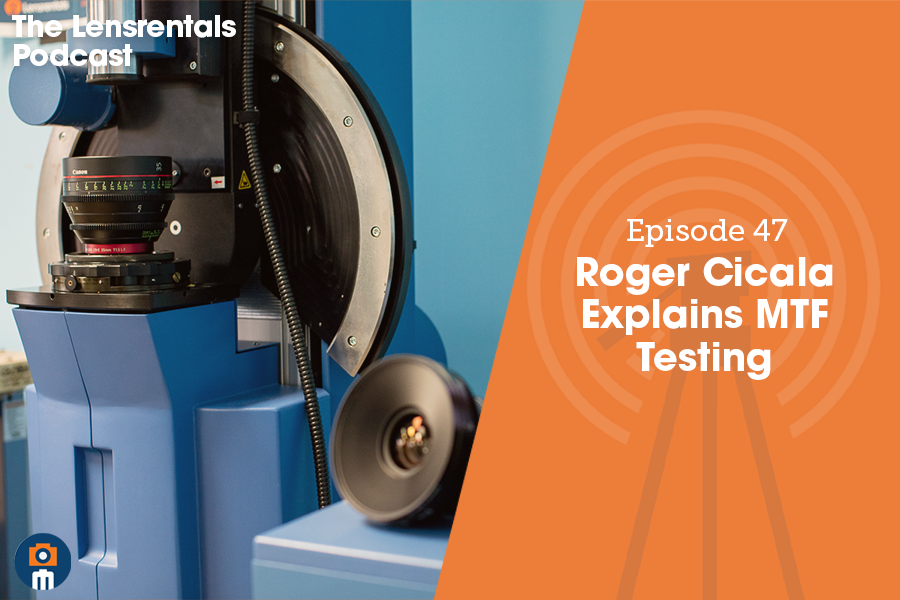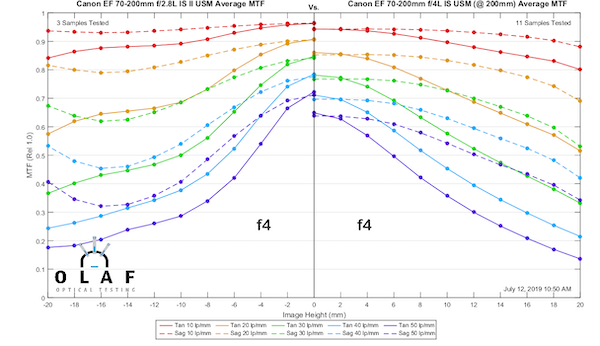Podcast Episode
The Lensrentals Podcast Episode #47 – Roger Cicala Explains MTF Testing

Each week Roger Cicala, founder of Lensrentals.com, hosts conversations about the art and science of capturing images. From photography to videography, film, history, and technology, the show covers a wide range of topics to educate and inspire creators of all kinds.
Roger Cicala Explains MTF Testing
If you’ve read more than one or two articles on our blog you’ve likely seen images of MTF charts and heard us discuss testing lenses on the optical bench. But what on earth does that mean, and why do we do it? We’re breaking it down with the best people possible, Roger, Aaron, and our audience surrogate, Ryan.
In short, MTF stands for Modulation Transfer Function and is a measurement of the optical performance of a lens. When understood, you can get have a significant understanding of a lenses performance, from whether it’s sharp on the edges of the frame, to if it has astigmatism that might lead to artifacts like “swirly bokeh”. With an inventory of lenses in the tens of thousands, our repair and technical departments love MTF charts, as it gives us an understanding of the lenses performance, without the need to strap it to a camera and do extensive testing.
We love it so much in fact, that we often will test multiple focal lengths from different manufacturers to find out which lens is optically the best, and even go as far as to test our own variables, like lens variance – where we’ve measured the lenses performance using multiple copies, to get a better understand of manufacturing consistencies. All of these tests can be done using our Imatest machine, which we’ve named OLAF, for Optical Lens Aberration Finder as well as our optical bench. While these machines are not for the faint of heart, they do give us a scientific edge to find which lenses will yield the best results. For more about MTF testing, and our OLAF machine, listen to this week’s podcast as Roger, Aaron and Ryan walk us through how it all works and while it’s important.
Mentioned in This Episode:
Articles Mentioned in This Episode:
- An older article, showing single slice MTF, combining 4 quadrants to an average, developing a range.
- General MTF training article
- A scientific paper that contains images of how we map out the MTF across the field of the lens
Timestamps
1:30 – MTF stands for Modulation Transfer Function. If we took a look at a snapshot of light and dark bars we’ll see some areas of blurring and colors are not all one or the other. MTF’s measure how much of that area of that image is blurry, and to what degree, measured by contrast.
3:35 – Using clear terms and language is a passion around here, so we clarify sharpness vs resolution vs contrast. For us, we try not to use “sharpness” because it’s so subjective, but still do sometimes as it’s hard to avoid. When testing lenses we define resolution as “how fine of detail can the camera resolve”. When MTF or Ima testing we are testing the combo of the camera and the lens.
5:00 – What is Imatest? Roger and Aaron explain, and also cover what it does and doesn’t do, and why we stopped using it after 3 years, moving to the optical bench.
6:50 – Using an optical bench means we test the lenses on their own with essentially a microscope, independent from a camera sensor.
7:20 – A frequent discussion on our blog posts is debating the difference between an objectively “good lens” and a technical or scientifically “sharp” lens. Roger clarifies that we are testing resolution to see if Lens A resolves better than Lens B.
“How would you describe the difference between a technically sharp lens and a “good lens” which is more of a personal decision?”
“We’re testing resolution. I can tell you that lens a resolves better than lens b and by how much, but I can’t tell you it’s a better lens, because we aren’t testing bokeh, lateral or longitudinal color, the focusing depth… There’s a lot that goes into making a lens “my favorite lens” one of which is resolution, and all we’re measuring is resolution.”
8:50 – Aaron deals with our cinema lens testing more than Roger does and says often what makes a “good lens” can shift from resolution to overall balance, how much tilt or misalignment is present, etc.
10:30 – Logistically and technically speaking, what is the optical bench actually measuring and how does it work? AKA explain to a moron what happens in Roger’s office.
13:00 – This episode has a lot of technical descriptions, so we’re providing several images of what we’re talking about in this article to help round out those descriptions with images, and this video of the optical bench in action too.
14:00 – Mid-episode recap of what we’ve learned so far:
– Roger and Aaron are measuring resolution. Not “sharpness”. And it’s not resolution in the way we think of a sensor resolution, it’s the ability of the lens to resolve detail, specifically black and white lines. And they’re measuring those resolutions at different frequencies of line pairs per millimeter.
– They take that measurement from the center of the lens out because the ability of the lens to resolve those fine lines is often not consistent from the center to the corners. Often lenses are much suck more on the edges than in the center.
16:30 – Aaron talks us through what he does when there are inconsistencies shown between copies of a lens being tested. As with most things, it begins with setting clear expectations. Most of the time elements have shifted within the barrel and a screw has come loose resulting in a misalignment or some other adjustable element.
18:40 – Sometimes it’s not a screw that’s loose in a busted lens and instead of a collar, as seen in many of our lens teardown articles. Even a routine adjustment will take several hours or half a day which is why we don’t do that outside of our own inventory.
20:00 – Break
20:45 – How do we decide what’s an acceptable level of variance among our lenses in inventory? We let you in on how the sausage gets made and how we’ve arrived at our expectations in the first place.
22:10 – On zoom lenses testing is done at both extremes and in the center. We’ve never seen a zoom that’s perfect at all focal lengths.
22:40 – Testing just one lens can run anywhere from one minute for a long focal length, a wide-aperture lens like an 85 f/1.4 or 35 f/1.8. up to 12 minutes for a small aperture, wide-angle lens like a 16mm f/2.8.
23:45 – Normal degree of variance copy to copy on primes can be around 2-3% in the center for a “good” lens and more around 10% on the corners. And yes, we find different standards depending on the prices too.
24:35 – Roger explains why there are two lines on MTF charts by getting into the laws of optics via a wagon wheel analogy.
28:20 – Lensrentals has been testing gear for a long time, and we’ve been getting better as we’ve learned and learned to look at the results and discuss with other optical nerds. This is kind of a lost field. When we got involved even the optical companies were doing the same tests they’d done in the 60s and they didn’t care, because if you do better tests you find more problems. And what manufacturer wants to find more problems?
30:15 – How do you read an MTF chart? What can you learn from reading a chart, and where are its limitations?
34:00 – To illustrate what we’ve learned, let’s look at the MTF chart for the: Canon 70-200 f/2.8 IS II
34:50 – It’s not a be-all end-all, ‘this is a good lens or this is a bad lens’ it’s looking at the [lens’] characteristics to determine what sort of lens works for you. The real question is what am I going to use this lens for, and does the MTF chart show it will be good for that?
35:55 – What’s next for Lensrentals testing? For Roger, it’s RF and Z lens. Aaron is excited about moving beyond MTF charts and figuring out how to test for it can’t show. And anamorphic!
The Lensrentals Podcast is a production of Lensrentals, founded by Roger Cicala. Our production staff includes Drew Cicala, Ryan Hill, Sarah McAlexander, SJ Smith, Julian Harper, John Tucker, and Zach Sutton. Other contributors include Roger Cicala, Joey Miller, Ally Aycock Patterson, Joshua Richardson, and Philip Robertson.
Thanks to Jacques Granger for our theme song.
Submit a topic idea, question, or comment, leave us a voicemail at 901-609-LENS, or send us an email at podcast@lensrentals.com.
Facebook
YouTube
Instagram
TikTok
Twitter
Pinterest
Author: Lensrentals
Articles written by the entire editorial and technical staff at LensRentals.com. These articles are for when there is more than one author for the entire post, and are written as a community effort.
-
Andre Yew
-
Andreas Werle
-
Roger Cicala
-
Athanasius Kirchner
-
Andre Yew
-
Mike Aubrey






